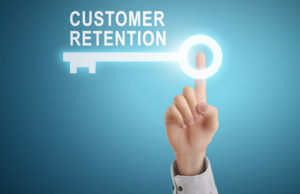
In an effort to gain a competitive edge in the market, companies are implementing customer self-service solutions to address two distinctly separate business challenges — improving the customer experience and cost reduction.
While the cost-related benefits of self-service are widely understood, and arguably self evident, new research by the Aberdeen Group found that a well-crafted customer self-service strategy can have a demonstrable impact on financial and growth objectives.
A Successful Strategy
A successful self-service strategy does not solely focus on pushing customers to the Web to drive down costs and relieve overburdened call center agents. Instead, it is about giving the customer options to service their own needs through the channel of their choice.
By focusing on the customer’s needs, the company begins to create a differentiated service experience that is not easily replicated by cost-focused competitors. However, this strategy is not a feel-good exercise with dubious business benefits. The research shows that companies that adopt self-service capabilities to address customer-centric goals increased customer satisfaction (65 percent), first call close rates (58 percent) and customer retention (39 percent) at significantly higher rates than companies focused solely on cost reduction. In fact, 75 percent of companies that have implemented self-service into the contact center have seen at least a 25 percent improvement in customer satisfaction.
However, that does not mean that cost-focused self-service initiatives cannot be used for strategic purposes. Early findings from upcoming Aberdeen research indicate that increasing customer “wallet-share” is primary for nearly eight out of 10 (79 percent) leading companies. In this case, a self-service strategy can be an integral component in providing a differentiated customer experience for high-value customers.
To support these strategies, 39 percent of Best in Class companies have or are considering implementing formalized processes and programs to encourage low-value customers to defect. Rather than lose these customers altogether, if executed properly, customer self-service can change the cost equation. Unprofitable customer relationships through one channel could be gold if serviced through another.
Regardless of the overarching strategic driver — differentiation or cost reduction — a well-designed self-service strategy falls into two categories: Web self-service and voice self-service.
Follow Along
The majority of the Aberdeen Best in Class (defined as the top-20 percent performance scorers in customer satisfaction, first-call close and customer retention) are focusing on developing Web-based self-service solutions.
Nine out of 10 Best in Class contact centers are providing customers with the ability to track issues over the Web, with more than half providing specific capabilities for order management (52 percent) and service management (62 percent). Slightly more than a third (35 percent) of the Best in Class use self-service technology to allow customers to access back-end systems to retrieve and update contact and order information.
Voice-Based Solutions
With the rise Web-based self-service solutions, it may be easy for managers to overlook voice-based solutions. Adoption of core voice technologies is fairly prevalent in leading companies. For instance, eight out of 10 of the Best in Class have implemented call routing and scheduling solutions and six out of 10 (56 percent) currently utilize integrated voice response (IVR) systems as part of their self-service strategies.
However, leading companies seem to be on the brink of adopting game-changing voice technologies that go beyond these tried and true solutions. The vanguard of the Best in Class is currently in the planning phases with several enabling self-service voice technologies including: VoIP (28 percent), speech recognition (19 percent) and VXML (15 percent).
These solutions are designed to address the dual objectives of both competitive differentiation and cost reduction. For example, Voice over Internet Protocol (VoIP) increases an agent’s mobility, allowing them to be located anywhere that a broadband connection exists; speech recognition reduces administration time by translating voice instructions into actionable tasks and Voice XML will underpin “Voice of the Customer” analytics initiatives.
Getting Started
Both voice and Web-based customer service technologies are widely used in a variety of companies. As such, focusing self-service investments solely on cost-reduction benefits is no longer a driver of competitive advantage. Instead, Best in Class contact centers are increasingly directing self-service initiatives forward improving the customer experience.
However, developing this customer-centric self-service ethos should be approached incrementally. As with any change initiative, managers should take a “crawl, walk, run” approach to implementing customer self-service initiatives.
First, managers should begin by evaluating self-service capabilities that are already in place with a critical eye toward the original operational objectives — were the current self-service capabilities designed to reduce costs or to deliver tangible value to the customer?
If the former, managers should focus on the implementation of differentiating capabilities such as issues tracking, customer-facing knowledge bases and online account management capabilities. The effort required to implement these capabilities should not be taken lightly. Many of the Best in Class have underpinned these baseline self-service capabilities with significant infrastructural investments such as CRM integration and dedicated business intelligence solutions to measure multi-channel performance. Only with a solid infrastructure and the baseline capabilities in place, should managers consider adopting more sophisticated solutions such as recommendation engines, speech recognition and LiveChat.
Andrew Boyd is senior vice president and research director for the Aberdeen Group, where he is responsible for customer relationship and experience management practice. Currently, his team’s research agenda focuses on customer-centric business models, the optimization of market-to-order processes and understanding the online customer experience. He can be reached at [email protected].
This story was originally published on June 21, 2007, and is brought to you today as part of our Best of ECT News series.




















































Social CRM
See all Social CRM